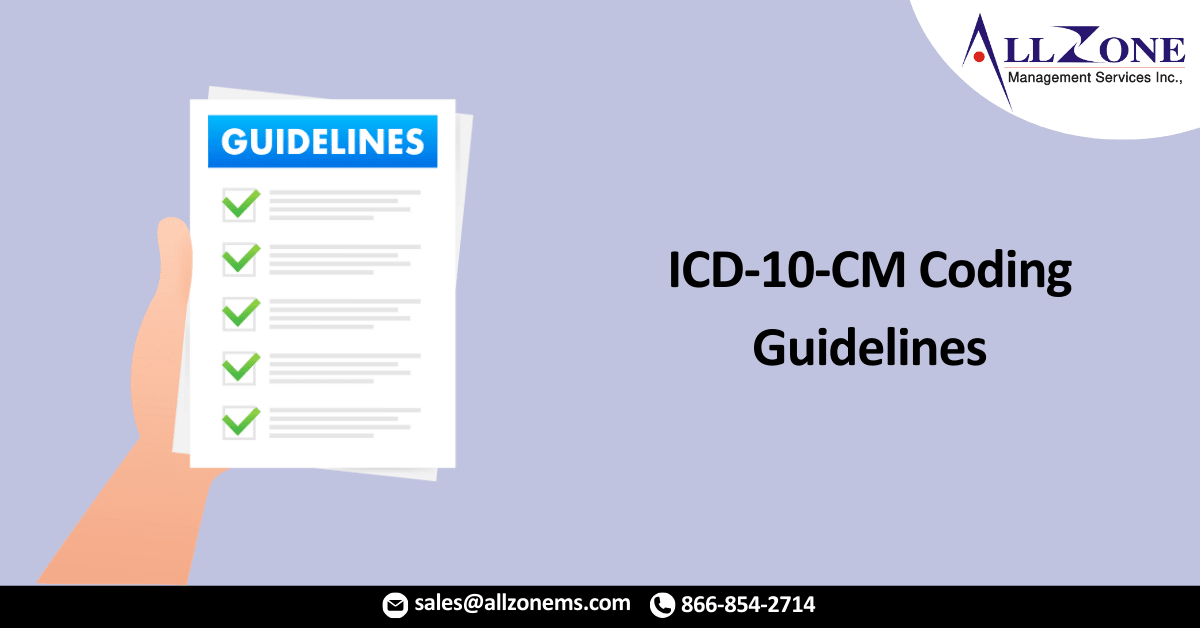Several changes have been recently made to the ICD-10-CM Official Guidelines for Coding and Reporting for fiscal year (FY) 2021. The guidelines changes affect code assignment for conditions and symptoms related to COVID-19. The Centers for Medicare & Medicaid Services (CMS) released the updates in December 2020. Familiarize yourself with the following new and revised guidance to ensure proper diagnosis coding and reporting.
Revisions to COVID-19 Coding Guidelines
The ICD-10-CM code set and Official Guidelines for FY 2021 went into effect on Oct. 1, 2020. Coding accuracy hinges on awareness and understanding of annual updates, as well as any subsequent changes made after their release. Take notice of the modifications to the following COVID-19 guidelines:
- Section I.C.1.g.1.c – Acute respiratory manifestations of COVID-19: The first subsection, (i) Pneumonia, now instructs you to report codes U07.1 COVID-19 and J12.82 Pneumonia due to coronavirus disease 2019 for a patient with pneumonia confirmed as due to COVID-19. Code J12.82 replaces J12.89 Other viral pneumonia.
- Section I.C.1.g.1.e – Exposure to COVID-19: Use code Z20.822 Contact with and (suspected) exposure to COVID-19 for asymptomatic individuals with actual or suspected exposure to COVID-19, as well as for symptomatic individuals with actual/suspected COVID-19 exposure and the infection has been ruled out, or test results are inconclusive or unknown. Z20.822 replaces Z20.828 Contact with and (suspected) exposure to other viral communicable diseases.
- Section I.C.1.g.1.f – Screening for COVID-19: In addition to explaining that it is not appropriate to report a screening code during the COVID-19 pandemic, the guideline now specifically states, “Do not assign code Z11.52 Encounter for screening for COVID-19.” Current guidance instructs you to use Z20.822 to report encounters for COVID-19 testing, including preoperative testing.
- Section I.C.1.g.1.g – Signs and symptoms without definitive diagnosis of COVID-19: Code Z20.822 replaces Z20.828 in this section, as well. You are now to assign Z20.822 when a patient with signs/symptoms associated with COVID-19 also has actual or suspected contact with or exposure to COVID-19.
- Section I.C.1.g.1.i – Personal history of COVID-19: Report Z86.16 Personal history of COVID-19 for individuals who have had COVID-19. Code Z86.16 replaces Z86.19 Personal history of other infectious and parasitic diseases.
- Section I.C.1.g.1.j – Follow-up visits after COVID-19 infection has resolved: Assign codes Z09 Encounter for follow-up examination after completed treatment for conditions other than malignant neoplasm and Z86.16 for individuals who previously had COVID-19 and are being seen for follow-up evaluation and their COVID-19 test results are negative.
New Section Provides Guidance on Coding MIS-C
Multisystem inflammatory syndrome in children (MIS-C) is a new pediatric disease that appears to be associated with severe acute respiratory syndrome coronavirus 2 (SARS-CoV-2). Most children who become infected with COVID-19 have only a mild illness. But in children who go on to develop MIS-C, some organs and tissues — such as the heart, lungs, kidneys, digestive system, brain, skin, or eyes — become severely inflamed.
The latest version of the COVID-19 guidelines includes an additional section (Section I.C.1.g.1.l), which addresses coding for MIS. Per the new guideline:
- For individuals with MIS and COVID-19, assign code U07.1 COVID-19 as the principal/first-listed diagnosis. Report code M35.81 Multisystem inflammatory syndrome as an additional diagnosis.
- In cases where MIS develops as a result of a previous COVID-19 infection, assign codes M35.81 and B94.8 Sequelae of other specified infectious and parasitic diseases.
- If an individual with a history of COVID-19 develops MIS and the provider does not indicate the MIS is due to the previous COVID-19 infection, assign codes M35.81 and Z86.16 Personal history of COVID-19.
- If an individual with a known or suspected exposure to COVID-19, and no current COVID-19 infection or history of COVID-19, develops MIS, assign codes M35.81 and Z20.822 Contact with and (suspected) exposure to COVID-19.
- Assign additional codes for any associated complications of MIS.
Other Notable 2021 Guideline Revisions
While there were no changes made to the following new guidelines in the most recent version of the ICD-10-CM Official Guidelines for Coding and Reporting for FY 2021, these updates are important and warrant mentioning.
- Language added to General Coding Guideline I.B.14 Documentation by Clinicians Other than the Patient’s Provider impacts the reporting of codes for social determinants of health (SDoH). The additional verbiage specifies that self-reported documentation may also be used to assign codes for SDoH, as long as the information is signed off and incorporated into the health record by either a clinician or provider.
- Guideline I.C.4.a.3 Diabetes Mellitus and the use of Insulin and Oral Hypoglycemics now includes instructions on reporting injectable non-insulin antidiabetic drugs. This has implications regarding the assignment of long-term drug use Z codes. Assign code Z79.899 Other long-term (current) drug therapy for a patient being treated with an injectable non-insulin antidiabetic drug in addition to reporting either Z79.4 Long-term (current) use of insulin or Z79.84 Long-term (current) use of oral hypoglycemic.
- For a breakdown of coding for conditions and symptoms associated with vaping-related disorders, turn to Section I.C.10.e. The new 2021 guideline instructs you to assign code U07.0 Vaping-related disorder as the principal diagnosis for patients presenting with only lung injury due to vaping. Assign additional codes, as needed, for other manifestations such as acute respiratory failure (J96.0-). Do not code respiratory symptoms due to vaping, such as cough or shortness of breath, separately once a definitive diagnosis has been established.
For More Information: 52635 keep abreast of the latest updates to 2021 guidelines

